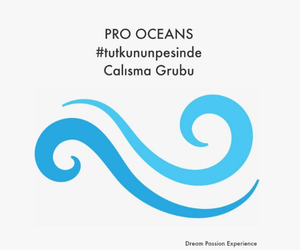Thailand has banned entry-level divers from using cameras near reefs – former full-time instructor Mark ‘Crowley’ Russell explains why the move has been so warmly welcomed by experienced divers
By Mark ‘Crowley’ Russell
The advent of digital cameras and the rise of underwater photography transformed the scuba diving world. It began as a trickle in the late 1990s, gained momentum with the arrival of Facebook in 2005, and became a veritable flood following the launch of Instagram in 2010.
I was a full-time dive professional during those years, and some of us would jokingly refer to underwater photographers as the ‘bane of our existence’. Divers who were more focused on their viewscreens than their surroundings became a serious headache in the world of recreational holiday diving.
It’s important to note that there is a clear distinction between a proper ‘underwater photographer’ and a ‘diver using a camera underwater’. The former is usually an experienced diver with expert buoyancy control, who prefers to dive in groups with other photographers; the latter is someone who has just picked up a camera and turned into – how shall I say this politely? – a total nightmare.
Some are just point-and-shoot happy snappers; others have all the expensive gear and absolutely no idea how to use it. The worst, however, are those who have so little awareness beyond their camera that they are a genuine danger to marine life, the environment, themselves and, potentially, their whole dive team.
I’ve seen a diver using table coral as a camera stand; another who propped himself up against a block of fire coral. I’ve had to pull people off the reef by their tank valves.
Some camera-wielding divers will try to provoke a reaction from wildlife by poking it – a practice that is not just hugely disrespectful and potentially damaging, but also genuinely dangerous. There are plenty of species – blue-ringed octopuses, for example – that you really don’t want to annoy.
I’ve dealt with photographers who’ve burned through their air 20 minutes into a 60-minute dive. One woman shot down 20 metres from a safety stop to snap a passing turtle. A chap I was diving with in the Red Sea disappeared inside the Thistlegorm wreck, then swam around it the wrong way before emerging, to my relief, on the other side of the ship.
I’ve had divers linger so long over a clownfish that they’ve mistakenly joined a following dive team. Once, I even had to abort a dive at Shark and Jolanda reef in Sharm El Sheikh because a photographer went missing. I spent five frantic minutes blazing around those two huge pinnacles looking for him, only to find him handing his camera up to a bemused crewman on a different dive centre’s boat.
Sometimes, the only option for preventing harm was to ban people from diving with their cameras.

What I am less enthusiastic about telling people is that I, too, was once one of those problem divers. My own first experience with a camera was in 2002, when I rented a Sea & Sea Motormarine 1 – the classic yellow box camera – during a holiday to Sharm El Sheikh.
I captured rolls and rolls of film of mostly blue-tinted fish swimming away from me against the background of a blue-tinted reef. Flushed with my success, I repeated my endeavours on a subsequent holiday to El Gouna.
On one dive, I spotted a crocodile fish in the sand below me, looking like it wanted to be photographed. I swam down and was just about to take that perfect shot… when my guide tapped me on the shoulder and rather furiously told me to ascend.
He checked my gauge. He gave me his octopus. I sat through the ignominy of slowly ascending from 15m back to safety-stop depth and spending another three minutes there on a spare air supply, trying to pretend I wasn’t an ass.
I think it’s important to tell that sorry tale because it is perfectly representative of the kind of stupidity that often overtakes divers with cameras. Like many of those who would later become the bane of my existence, I was an Advanced Open Water (AOW) diver with around 50 dives. I considered myself to be quite knowledgeable. I read DIVE Magazine.
In that moment, however, I abandoned my training to take a picture of a very common fish. I don’t really know why. I was never an enthusiast at the surface and there was no social media back then, so it wasn’t about showing off, but I put myself in a potentially very dangerous position nevertheless.
For some reason the desire to take a picture of an alien creature in a novel environment turns even competent and considerate divers into idiots.
This is why many divers and dive professionals have very warmly welcomed the decision by Thai authorities to ban entry-level divers from using cameras, and ban instructors from using cameras during entry-level training.
During entry-level training, it’s a no-brainer. Any attention an instructor pays to their camera is attention not being paid to their students, and any reasonable instructor would find such a thing unacceptable, because it’s dangerous.
Experienced underwater photographers will always say that a mastery of dive skills is essential prior to getting started with a camera.
This is mostly because the chief problem for novice underwater photographers is – like many things – poor buoyancy control, leading to environmental damage as they thrash their fins around trying to stay in position.
Beyond damage to the reef, most cameras require the use of two hands while taking a picture, leaving none for dump valves and inflators. This leaves inexperienced divers with cameras prone to crashing into whatever’s below them or rapid, uncontrolled ascents.
Not having both hands free affects a diver’s ability to support themselves or change position, so being able to manage your orientation in the water using just your fins is essential. Learning to fin backwards, for example, takes a fair amount of practice but is considered an important skill by the professionals.
A photographer’s frame of reference shrinks to the size of their viewscreen, so it’s important to make observations before moving in for a shot. Also required is a good awareness of your position to prevent damage to the environment, or accidentally grabbing on to the coral (or scorpionfish, true story!) if you need to reach out and steady yourself.
Most dangerously of all, camera screens become a distraction from gauges and dive computers. Inattention to either can lead to low-on-air situations and no decompression limit violations, potentially resulting in rapid ascents, decompression illness, or even boat strikes.
Some will argue that Thailand’s minimum requirement of AOW for photographers is not enough. Certification level and dive experience are not a perfect match, however, so I think it’s an acceptable place to draw the line.
Having said that, I would recommend that dive professionals be allowed to have a say in which divers are competent enough to be allowed to use a camera, and ask those who aren’t to get some more training before they do.
Courses are available!
The post Snap Happy – why Thailand’s banning of cameras for entry level divers is a good thing appeared first on DIVE Magazine.





